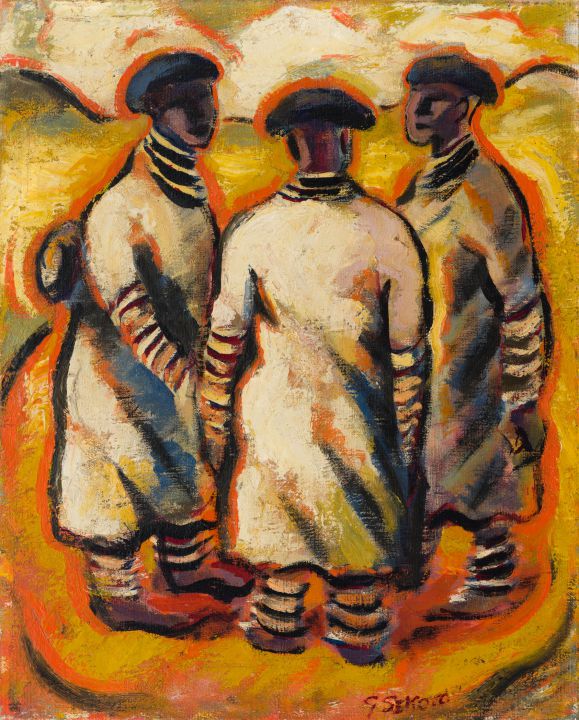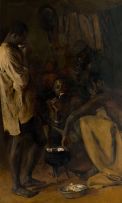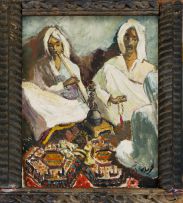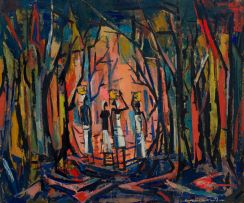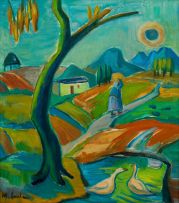Important South African and International Art
Live Auction, 4 June 2018
Session Three
Incl. Buyer's Premium & VAT
About this Item
Notes
'My subject matter was still South African life, as I had decided to hang on to it so as not to lose roots.' Gerard Sekoto
Gerard Sekoto's undated Ndebele Women, would seem to have been painted shortly after he left South Africa in 1947 for selfimposed exile in Paris. During this time he painted a series of works portraying his cultural roots, the land, huts and fields and the people he had left behind. This included a series of stylised works of people in traditional dress, the Basotho, the Mandebele and, as is the case in this painting, a group of Ndebele women.
Sekoto describes the underlying impetus for these works as follows: 'These were the people with whom I used to live side by side in my youth … The reason of my stylising at the time came out of fear of the jungles around. Varieties of styles in the new place made me feel stubborn about not losing my personality. I therefore thought to take something apart, hence the rounds and ovals …'1 Similar to other works of this period, Ndebele Women is a stylised study of rural people in the African landscape. In this case the lines, the composition, the women and the landscape are shaped from the very fluid rounds and ovals that were referred to by Sekoto. The artist confines his palette to the earthy tones of the southern African soil, browns and a burnt orange that shape the landscape and the women here huddled in conversation. The radiant orange outline gives the painting a gorgeous golden glow while the limited palette is further enlivened by the contrasting rich deep blue, black and white, that accentuate the figures and draw the eye towards the centre of the painting.
Sekoto portrayed the dignity of humanity, he himself having survived extreme adversity throughout his life, from his earliest days within a strictly controlled political structure to his personal struggles in his adopted Paris. His subject matter is instilled with an heroic quality. His insight into his fellow human beings within their social environment is profound, and his paintings are subtle commentary on the social, political and economic circumstances of the people living in the country of his birth.2
1 Barbara Lindop (1988). Gerard Sekoto, Randburg: dictum publishing. Page 187 and 189.
2 Ibid. Page iiv.
